-
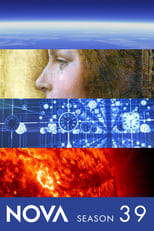
-
-
NOVA : Season 39
-
Air date: 07 Sep '11 - 19 episodesPBS' premier science series helps viewers of all ages explore the science behind the headlines. Along the way, NOVA demystifies science and technology, and highlights the people involved in scientific pursuits.
-
-
List of Episodes (19)
-
NOVA (1974)

-
1. Engineering Ground Zero
07 Sep '11To commemorate the 10th anniversary of 9/11, NOVA presents an epic story of engineering, innovation, and the perseverance of the human spirit. With extraordinary access granted by The Port Authority of New York and New Jersey, “Engineering Ground Zero” follows the five-year construction of One World Trade Center (1 WTC) and the National September 11 Memorial & Museum.
-
NOVA (1974)
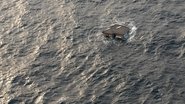
-
2. Surviving the Tsunami
28 Sep '11The earthquake that hit the northern coast of Japan on March 11, 2011, was recorded at magnitude 9.0 the worst ever recorded in Japan. It generated an unprecedented tsunami, obliterating coastal villages and towns in a matter of minutes. In some areas, the tsunami climbed above 100 feet in height and traveled miles inland. Amazingly, amateur and professional photographers captured it all on video, including remarkable tales of human survival, as ordinary citizens became heroes in a drama they ne
-
NOVA (1974)

-
3. Finding Life Beyond Earth: Are We Alone?
19 Oct '11Take a spectacular trip to distant realms of our solar system to discover where secret forms of life may lie hidden. Combining the latest telescope images with dazzling animation, this program immerses audiences in the sights and sounds of alien worlds, while top astrobiologists explain how these places are changing how we think about the potential for life in our solar system. We used to think our neighboring planets and moons were fairly boring—mostly cold, dead rocks where life could never ta
-
NOVA (1974)
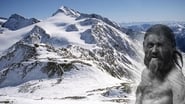
-
4. Iceman Murder Mystery
26 Oct '11He’s been dead for more than 5,000 years and poked, prodded, and probed by scientists for the last 20. Yet Ötzi the Iceman, the famous mummified corpse pulled from a glacier in the Italian Alps, continues to keep many secrets. Now, through an autopsy like none other, scientists will attempt to unravel mysteries about this ancient mummy, revealing not only the details of Ötzi’s death but also an entire way of life. How did people live during Ötzi’s time, the Copper Age? What did they eat? What di
-
NOVA (1974)

-
5. The Fabric of the Cosmos - What is Space?
02 Nov '11Space. It separates you from me, one galaxy from the next, and atoms from each other. It is everywhere in the universe. But to most of us, space is nothing, an empty void. Well, it turns out space is not what it seems. From the passenger seat of a New York cab driving near the speed of light to a pool hall where billiard tables do fantastical things, Brian Greene reveals space as a dynamic fabric that can stretch, twist, warp, and ripple under the influence of gravity. Stranger still is a newly
-
NOVA (1974)

-
6. The Fabric of the Cosmos - The Illusion of Time
09 Nov '11Time. We waste it, save it, kill it, make it. The world runs on it. Yet, ask physicists what time actually is, and the answer might shock you: They have no idea. Even more surprising, the deep sense we have of time passing from present to past may be nothing more than an illusion. How can our understanding of something so familiar be so wrong? In search of answers, Brian Greene takes us on the ultimate time-traveling adventure, hurtling 50 years into the future before stepping into a wormhole to
-
NOVA (1974)

-
7. The Fabric of the Cosmos - Quantum Leap
16 Nov '11Join Brian Greene on a wild ride into the weird realm of quantum physics, which governs the universe on the tiniest of scales. Greene brings quantum mechanics to life in a nightclub like no other, where objects pop in and out of existence, and things over here can affect others over there, instantaneously and without anything crossing the space between them. A century ago, during the initial shots in the quantum revolution, the best minds of a generation—including Albert Einstein and Niels Bohr—
-
NOVA (1974)
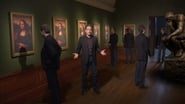
-
8. The Fabric of the Cosmos - Universe or Multiverse?
23 Nov '11Hard as it is to swallow, cutting-edge theories are suggesting that our universe may not be the only universe. Instead, it may be just one of an infinite number of worlds that make up the multiverse. In this show, Brian Greene takes us on a tour of this brave new theory at the frontier of physics, explaining why scientists believe it's true and showing what some of these alternate realities might be like. Some universes may be almost indistinguishable from our own; others may contain variations
-
NOVA (1974)
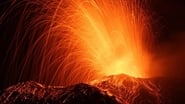
-
9. Deadliest Volcanoes
04 Jan '12Millions of people around the world live in the shadow of active volcanoes. Under constant threat of massive volcanic eruptions, their homes and their lives are daily at risk from these sleeping giants. From Japan’s Mount Fuji to the "Sleeping Giant" submerged beneath Naples to the Yellowstone "supervolcano" in the United States, we will travel with scientists from around the world who are at work on these sites, attempting to discover how likely these volcanoes are to erupt, when it might happe
-
NOVA (1974)
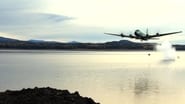
-
10. Bombing Hitler's Dams
11 Jan '12In 1943 a squadron of Lancaster bombers staged one of the most audacious raids in military history: destroying two gigantic dams in Germany’s industrial heartland and cutting the water supply to arms factories. Their secret weapon? A revolutionary bouncing bomb invented by British engineer Barnes Wallis. Wallis and the pilots of 617 Squadron—a lively mix of Britons, Australians, Americans, and Canadians—were hailed as heroes who dealt a mighty blow to the German war machine. Now, NOVA recreates
-
NOVA (1974)

-
11. 3D Spies of WWII
18 Jan '12During World War II, Hitler’s scientists developed terrifying new weapons of mass destruction. Alarmed by rumors of advanced rockets and missiles, Allied intelligence recruited a team of brilliant minds from British universities and Hollywood studios to a country house near London. Here, they secretly pored over millions of air photos shot at great risk over German territory by specially converted, high-flying Spitfires. Peering at the photos through 3D stereoscopes, the team spotted telltale cl
-
NOVA (1974)

-
12. Mystery of a Masterpiece
25 Jan '12In October 2007, a striking portrait of a young woman in Renaissance dress made world news headlines. Originally sold nine years before for around $20,000, the portrait is now thought to be an undiscovered masterwork by Leonardo da Vinci worth more than $100 million. How did cutting-edge imaging analysis help tie the portrait to Leonardo? NOVA meets a new breed of experts who are approaching "cold case" art mysteries as if they were crime scenes, determined to discover "who committed the art." A
-
NOVA (1974)

-
13. Ice Age Death Trap
01 Feb '12In a race against developers in the Rocky Mountains, archeologists uncover a unique fossil site packed with astonishingly well-preserved bones of mammoths, mastodons, and other giant extinct beasts. The discovery opens a highly focused window on the vanished world of the Ice Age in North America.
-
NOVA (1974)

-
14. Separating Twins
08 Feb '12This is the incredible story of Trishna and Krishna, twin girls born joined at the head. Abandoned shortly after birth at an orphanage in Bangladesh, they had little chance of survival, until they were saved and taken to Australia by an aid worker. After two years battling for life, the twins are ready for a series of delicate operations that will prepare them for the ultimate challenge: a marathon separation surgery that will allow them to live truly separate lives. Since the beginning, surgeon
-
NOVA (1974)

-
15. Cracking Your Genetic Code
28 Mar '12What will it mean when most of us can afford to have the information in our DNA—all three billion chemical letters of it—read, stored, and available for analysis? In "Cracking Your Genetic Code," NOVA reveals that we stand on the verge of a revolution. We meet cancer patients returned to robust health and a cystic fibrosis sufferer breathing easily because scientists have been able to pinpoint and neutralize the genetic abnormalities underlying their conditions. What are the moral dilemmas raise
-
NOVA (1974)

-
16. Hunting the Elements
04 Apr '12Where do nature’s building blocks, called the elements, come from? They’re the hidden ingredients of everything in our world, from the carbon in our bodies to the metals in our smartphones. To unlock their secrets, David Pogue, the lively host of NOVA’s popular "Making Stuff" series and technology correspondent of The New York Times, spins viewers through the world of weird, extreme chemistry: the strongest acids, the deadliest poisons, the universe’s most abundant elements, and the rarest of th
-
NOVA (1974)
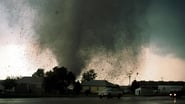
-
17. Deadliest Tornadoes
11 Apr '12In April 2011, the worst tornado outbreak in decades left a trail of destruction across the U.S., killing more than 360 people. Why was there such an extreme outbreak? How do such outbreaks form? With modern warning systems, why did so many die? Is our weather getting more extreme—and, if so, how bad will it get? In this NOVA special, we meet scientists striving to understand the forces at work behind last year's outbreak. Could their work improve tornado prediction in the future? We also meet p
-
NOVA (1974)
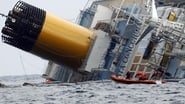
-
18. Why Ships Sink
18 Apr '12Twenty million passengers embark on cruises each year, vacationing in deluxe "floating cities" that offer everything from swimming pools to shopping malls to ice skating rinks. And the ships just keep getting bigger: The average cruise ship has doubled in size in just the last ten years. Some engineers fear that these towering behemoths are dangerously unstable, and the recent tragedy of the Costa Concordia has raised new questions about their safety. Now, NOVA brings together marine engineering
-
NOVA (1974)

-
19. Secrets of the Sun
25 Apr '12It contains 99.9 percent of all the matter in our solar system and sheds hot plasma at nearly a million miles an hour. The temperature at its core is a staggering 27 million degrees Fahrenheit. It convulses, it blazes, it sings. You know it as the sun. Scientists know it as one of the most amazing physics laboratories in the universe. Now, with the help of new spacecraft and Earth-based telescopes, scientists are seeing the sun as they never have before and even recreating what happens at its ve
-


























